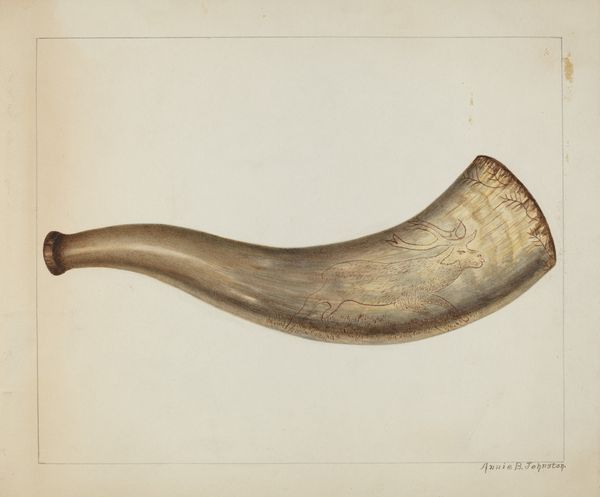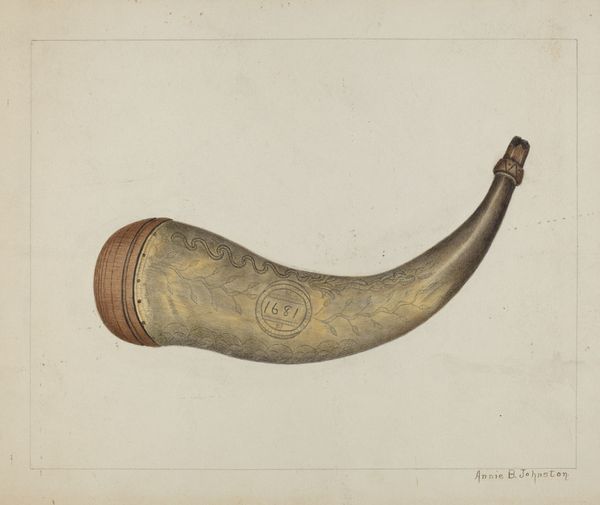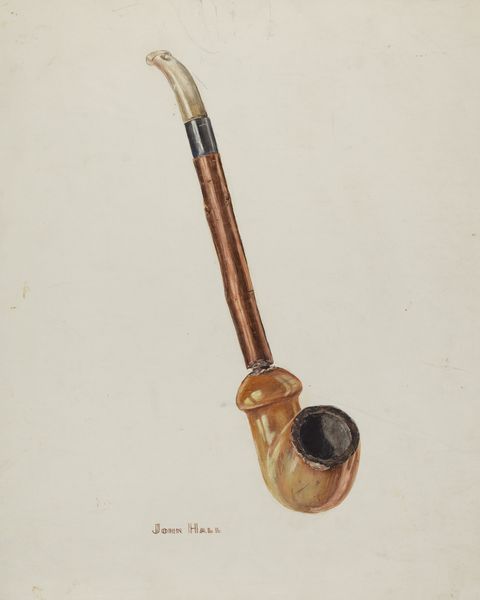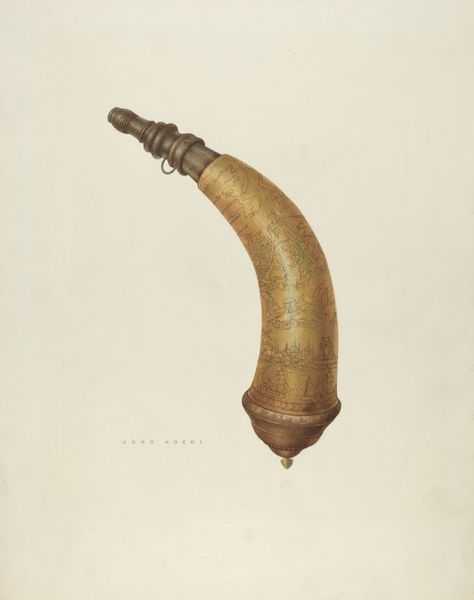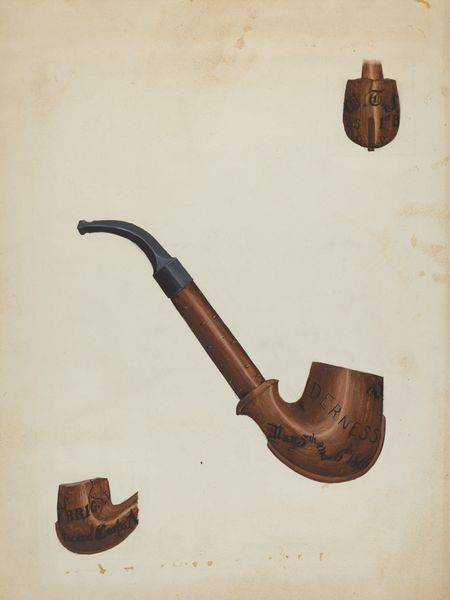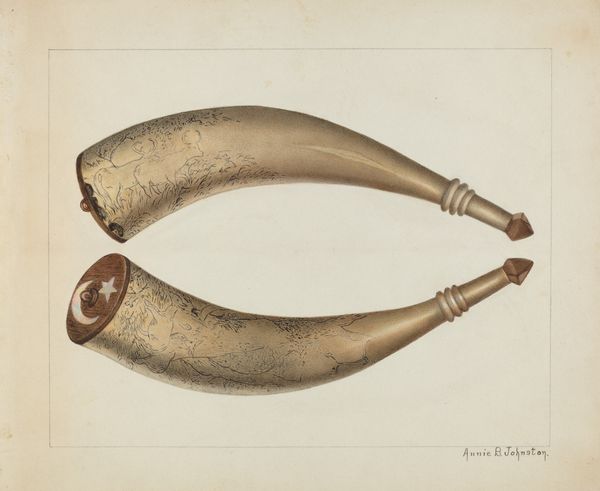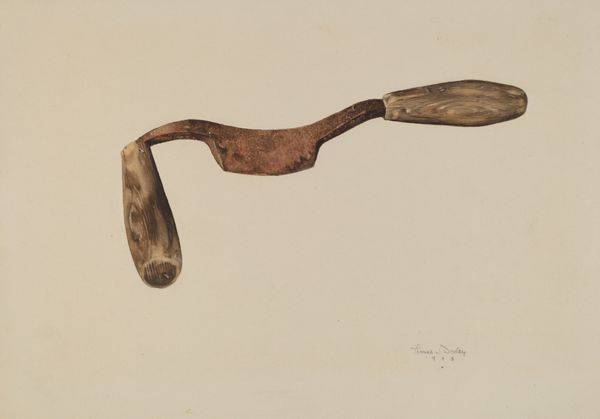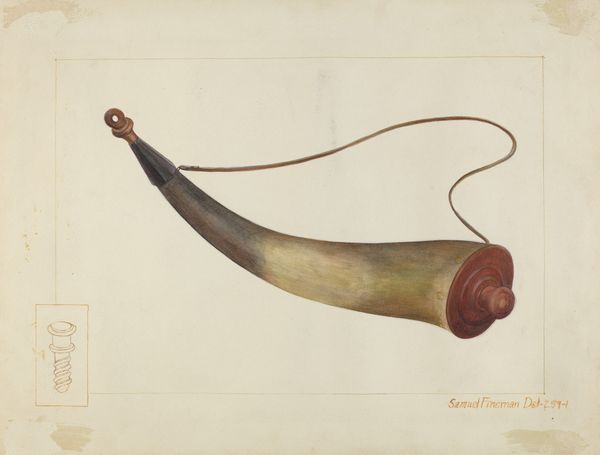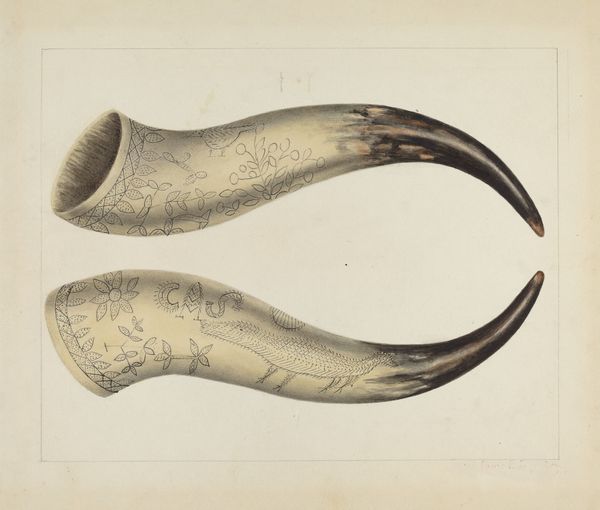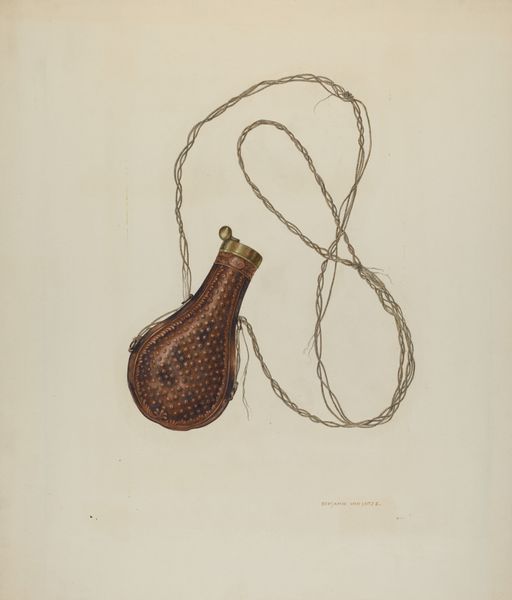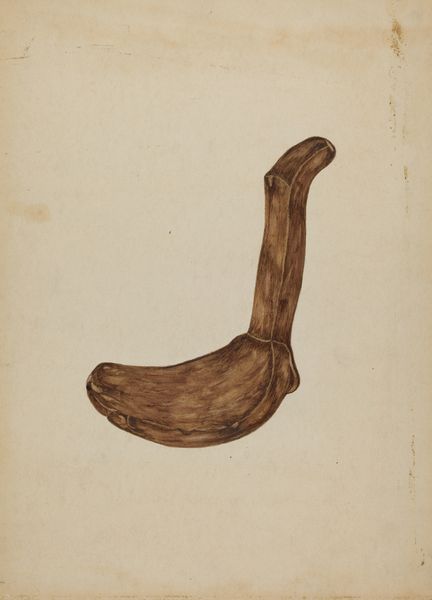
drawing, watercolor
#
drawing
#
watercolor
#
watercolour illustration
#
watercolor
Dimensions: overall: 51.3 x 40.9 cm (20 3/16 x 16 1/8 in.) Original IAD Object: 16" long
Copyright: National Gallery of Art: CC0 1.0
Curator: Let’s turn our attention to Alfred Koehn's "Powder Horn," a watercolor and drawing piece created between 1935 and 1942. It depicts, rather straightforwardly, two powder horns. Editor: My first impression is one of quiet fragility. The muted colors and delicate lines lend it a subtle, almost ethereal quality, don't you think? It speaks of something aged and precious. Curator: Precisely. Given the timeframe of its creation, during the Depression, these horns become more than mere objects. They symbolize self-reliance, a reaching back to colonial American values amidst widespread economic hardship. They represent a certain idealized version of American identity during the colonial era. Editor: Absolutely. I'm particularly drawn to the process. These aren't just drawings; they're renderings that demonstrate an intense material focus. We see the horn's surface painstakingly replicated in watercolor, complete with what looks like detailed scrimshaw work, probably intended for ornamentation. Curator: The etched decorations carry their own weight. They evoke a longing for a mythologized past and speak of a specific craftsmanship linked with the everyday lives of colonial subjects. We see glimpses of text and pictorial narratives, suggesting the horns functioned as both practical tools and sites of identity and remembrance. Editor: And considering Koehn was creating this nearly two centuries after their widespread usage, we are confronted with the question of who it speaks to. As reproductions made well after their time, these serve not just as artifacts, but as deliberate engagements with ideas of preservation and labor in a new, industrialized era. The use of watercolor, not exactly the toughest material, makes me think it speaks more about sentimentality than self-defense. Curator: That's a valid point. It reframes the understanding from a declaration of frontier independence to an introspective glance at history’s filtered lens and collective anxieties surrounding American ideals and narratives of its founding during economic insecurity. Editor: So, instead of viewing them simply as artistic representations of utilitarian items, it makes me think about how our collective memory chooses to retain artifacts and concepts that make up our cultural history. Curator: An important lens that can help bring depth to these depictions. Thanks for lending that view, hopefully our listeners appreciate these details in viewing these watercolor renditions. Editor: Indeed, appreciating historical depictions such as these allows us a tangible encounter, engaging our relationship with the materials and circumstances of artmaking, but also in considering our modern relationship with historical events that influence the culture we experience in real time.
Comments
No comments
Be the first to comment and join the conversation on the ultimate creative platform.
